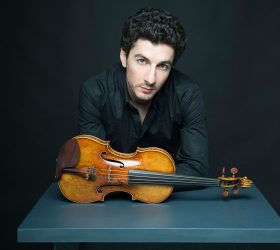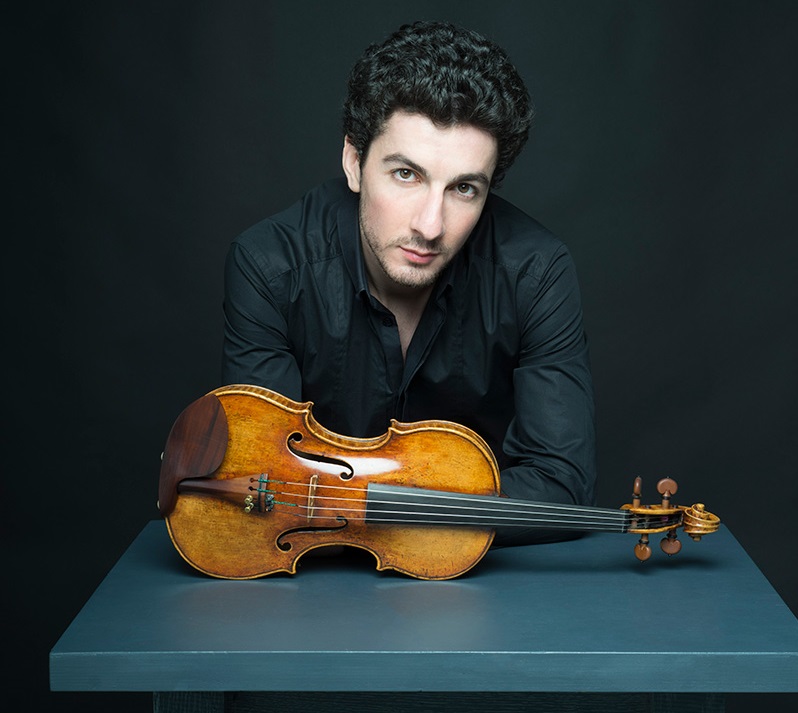 United States Shostakovich, Beethoven: Sergey Khachatryan (violin), Cleveland Orchestra / Jakub Hrůša (conductor), Severance Hall, Cleveland, Ohio, 7.11.2019. (MSJ)
United States Shostakovich, Beethoven: Sergey Khachatryan (violin), Cleveland Orchestra / Jakub Hrůša (conductor), Severance Hall, Cleveland, Ohio, 7.11.2019. (MSJ)

Shostakovich – Violin Concerto No.1 in A minor, Op.77
Beethoven – Symphony No.3 in E-flat major, Op.55, Eroica
Some masterpieces only come fully to life when the performers supply the right ingredients. Shostakovich’s first violin concerto is like that, with the key ingredient being emotional tension. But once that is supplied, there are different ways to realize the piece. Over the years, I have heard three performances by the Cleveland Orchestra, but all found very different routes to the core of Shostakovich’s intensity, thanks to the soloists.
Twenty years ago, Christian Tetzlaff was startlingly icy, offering steely control. Six years ago, I heard Frank Peter Zimmermann go to the other extreme with a fiery wildness. This concert brought the interesting young Armenian violinist Sergey Khachatryan, and he charted his own course. A previous encounter in Brahms’s Violin Concerto showed that this violinist is wound tight with introspective tension. Here, he cranked it even tighter.
Where many artists make their greatest impact in the loud passages — particularly the climax of the cadenza linking the third and fourth movements — Khachatryan was most compelling in the quiet moments, which he dared to push to a whisper. This was a good strategy, considering that Shostakovich kept the first movement nocturne fiercely controlled. The listener can’t even identify the exact moment where the composer was informed that he had been called to appear in front of the Soviet composers’ commission for alleged musical offenses, even though he marked it in the score. Khachatryan played with confessional intensity and focus.
The Scherzo had plenty of energy, particularly on the orchestral front where conductor Jakub Hrůša aggressively propelled the Clevelanders, but the following Passacaglia brought a return to the soloist’s introspection. The cadenza started stealthily but grew to fierceness, Khachatryan chopping accents so aggressively that as the orchestra began the finale, he had to take a moment to tear the broken hairs from his violin bow. The finale closed with rousing nervous energy.
Pairing the Shostakovich with Beethoven’s Eroica Symphony is shrewd programming, since both artists dared to speak to power. In the former’s case, he had to wait until the death of Soviet premier Joseph Stalin before his work could be published. Beethoven was in a separate country from the Emperor Napoleon, so he was free to denounce the tyrant while unveiling his symphony. He titled it Sinfonia Eroica (‘Heroic Symphony’) to remove any association with Napoleon, whom Beethoven admired until the French general proved himself just another power-hungry bully.
Beyond the politics, though, this symphony knocked European art music sideways. After the composer’s first two symphonies (that sometimes come across to modern listeners as Haydn on steroids), Beethoven decided he needed to be more original. The third keeps the classical outline but inflates the proportions in visionary directions. Ideally, the Eroica should shock. But the conundrum is that familiarity makes it difficult for that to happen.
Hrůša certainly didn’t do a bad job, in an energetic reading, but two main problems quickly emerged. One was a tendency toward quick, metronomic speeds. Imaginative vision sometimes requires space to take a breath before moving on. Here, the first movement and the first half of the second were simply too machine-like, though expertly handled.
The other problem was simply that the result felt too self-conscious of traditions and scholarship, as if Hrůša had tried to strike a balance between doing the piece heroically, with slower tempos, and the modern attention to Beethoven’s fast metronome speeds. In the end, both approaches seemed compromised. It was too metronomic to be heroic, yet too broadly mainstream to be authentic.
Finally, somewhere around the middle of the second movement funeral march, such self-conscious concerns dropped away and the score began to be about nothing other than itself. Though sparks flew, the result never quite burst into full flame, though the succeeding Scherzo and Finale were engaging, with stellar work by the orchestra’s woodwinds.
Hrůša is an outstanding talent capable of provoking great intensity from this ensemble, as previously seen in Shostakovich’s Fifth Symphony and Josef Suk’s Asrael Symphony. But the conductor hasn’t yet broken the mold of his influences, though, in the Eroica. I hope that at some point he stops caring what others have done and said and turns his full focus toward what Beethoven’s masterpiece has to say to us today.
Mark Sebastian Jordan
